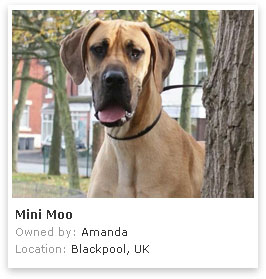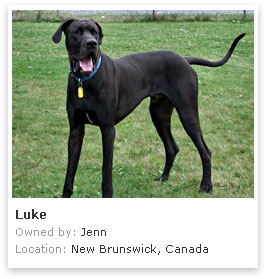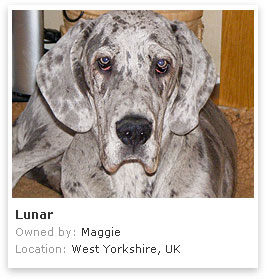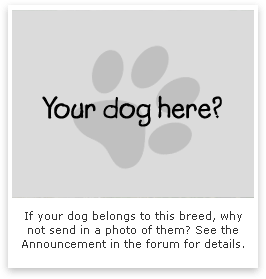OriginThere is no consensus on the exact origin of the Great Dane. Dogs of comparable type are depicted on Egyptian and Assyrian artefacts dating back to 3,000 B.C. During medieval times they were bred and kept by the German nobility to hunt wild boar and were known for many years as German Boarhounds. They also guarded castles, hunted deer, and participated in battles with their masters. The ‘Danish’ connection is also a matter for conjecture as it appears certain that Denmark contributed nothing to the development of the breed, the credit for that resting squarely with the Germans. The Standard for the breed in all countries is based on that of the Deutsche Dogge Club which was established in 1888. Brought to perfection in Germany the popularity of the Great Dane increased due, in no small measure, to its distinguished appearance and its spirited but kindly nature. This breed was first recognized by the Kennel Club in 1884.
Character:The character of a well-bred, well-managed Great Dane is practically flawless. They love human company, bond strongly with all family members and thrive best if kept as indoor dogs. They are usually dependable and very gentle with children, although their sheer size may mean that even the mildest of greetings may up-end a toddler. Tolerant and unaggressive they are friendly towards all people, but they are excellent watchdogs and will alert to trespassers. They also seem to have the ability to distinguish between welcome and unwelcome visitors and, of course, their size and loud alarm bark are very effective deterrents. With other dogs the Dane is usually very ready to be friends and will not start trouble but, if persistently provoked, is well able to take care of himself. Outstanding in temperament and appearance, and a loyal and affectionate companion, if you are contemplating a Great Dane it is wise to make the acquaintance of adult dogs first as “36 inches; 170 lbs” is a lot different in the flesh than on paper!
Exercise:Extreme care must be taken with exercise during the first 18 months of rapid growth to avoid permanent and disabling damage to developing bones and joints. Very little exercise is required during the first twelve months and should be very gently and slowly increased after that. As with all large breeds, jumping, stairs, and rough play should be avoided. The exercise requirements of the adult Dane are moderate: a daily walk, a little free running and some play, the rest of the time they are quite happy to laze around close to their people. This is not the breed for people who pursue a very energetic lifestyle as care must taken throughout the life of the dog not to cause harm to limbs and joints by over-exercising.
Training:It is essential that a dog of this size should be under good control so basic obedience training and teaching the pup not to jump up or pull on the lead is strongly recommended. Danes are very willing to please and can be quickly and successfully taught using positive reinforcement. Harsh verbal or physical methods are unnecessary and will undermine the dog’s respect for his handler and his willingness to work. With patient and consistent training Danes can do well in competetive obedience. Socialization should be early and on-going to prevent the possibility of shyness or nervousness in unfamiliar situations or with unknown people.
|
KC Group:
Working
KC, AKC, FCI recognized?
Yes
Size:
Extra Large
Height:
Dogs: minimum 76 cm (30ins) preferably 84 - 91.5 cm (33 - 36 ins)
Bitches: minimum 71 cm (28 ins) preferably 76 - 84 cm (30 - 33 ins)
Weight:
Dogs: minimum 54 kg (120 lbs) preferably 63.5 - 77 kg (140 - 170 lbs)
Bitches: minimum 46 kg (100 lbs) preferably 50 - 63 kg (110 - 140 lbs)
Colour:
Brindle, fawn, blue, black, harlequin (white with black or blue patches)
Lifespan:
8 years
Coat:
Sort, sleek, dense
Grooming:
Easy
Health issues:
Osteochondritis dissecans (OCD), hypertrophic osteodystrophy (HOD), panosteitis, heart disease, progressive ataxia, eye problems, thyroiditis, susceptible to bloat

|













